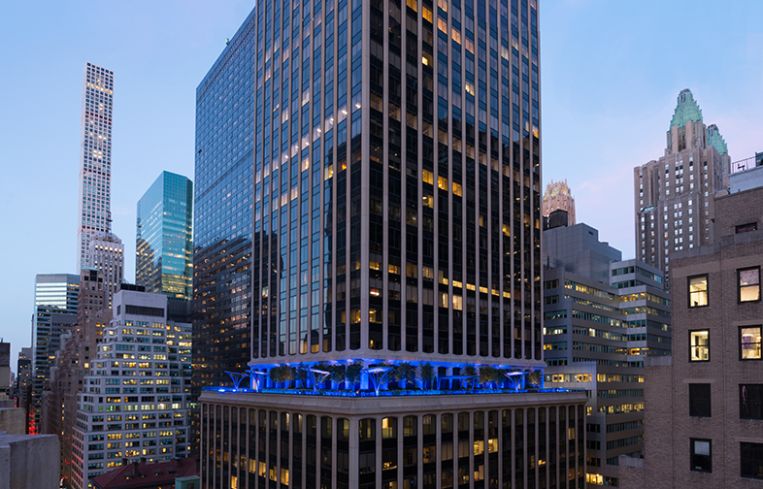Middling Results: Midtown’s Leasing Slowed in Third Quarter of This Year
Only eight large transactions were signed in Midtown in Q3 and leasing activity is down 30 percent from the five-year average.
By Nicholas Rizzi October 29, 2019 1:30 pm
reprints
Things haven’t looked that great for Midtown’s office market this past quarter.
The neighborhood’s office leasing activity dropped to 2.2 million square feet of total deals in the third quarter of this year, down more than 30 percent from the five-year historical average in the area, according to a report by Transwestern.
Midtown netted only eight large block transactions — defined as more than 100,000 square feet — in the third quarter that totaled 1.6 million square feet, down from the 10 signed during the same time last year totaling 3.2 million square feet and usually driven by the financial sector, according to a different report by Avison Young.
“There are fewer and smaller large block transactions,” said Marisha Clinton, a senior director of research at Avison Young. “In Midtown, there were smaller financial service firms and they were fewer in numbers.”
While leasing activity cooled in the third quarter, the vacancy rate also reached its highest level since 2016, jumping to 11.2 percent, the Transwestern report found. The neighborhood had 2.1 million square feet of negative absorption, Midtown’s highest quarterly total since 2009.
“It kind of appears like the sky is falling, but that’s not necessarily the case,” said Danny Mangru, a research manager at Transwestern. “There’s definitely no need to hit the panic button.”
Mangru said the increase of the negative net absorption rate was caused by large blocks of space coming online — including Publicis Groupe’s 601,000-square-foot sublet space at 1675 Broadway — along with new developments like the Farley Post Office redevelopment at Penn Station.
The new developments sent asking rents up slightly to $90.81 per square foot, up from $85.92 per square foot during the same time last year. And tenants don’t seem to be balking at the higher numbers, Clinton said.
“Tenants want what they want,” she said. “If it’s close to Penn Station and the Port Authority, they will pay triple-digit rents for this newer product.”
Part of what’s driving the numbers up is that 2019 is being compared to the strong leasing numbers Midtown, and all of Manhattan, closed out 2018 with, Mangru said.
“What’s really magnifying it is 2018 was kind of an anomaly year,” he said. “It’s almost unsustainable to have that each year.”
Despite the negative figures, Mangru said there were some positives in Midtown last quarter. The neighborhood had some of the largest leases of the third quarter including WeWork’s 362,197-square-foot deal at 437 Madison Avenue, law firm Shearman & Sterling’s 388,057-square-foot renewal at 599 Lexington Avenue and Macquarie Group’s 259,649-square-foot renewal at 125 West 55th Street.
“Midtown is still the market for large block transactions,” Mangru said.
Coworking and shared space accounted for a total of 13 percent of all leases in Midtown, but WeWork’s recent struggles and decision to put a halt on new lease deals won’t seem to hurt the neighborhood much. Mangru said Midtown has already had some good activity in the fourth quarter of this year including LinkedIn’s 188,653-square-foot expansion at the Empire State Building and law firm Katten’s 125,000-square-foot deal at 50 Rockefeller Plaza.
“Overall, the pipeline does, in fact, look better for the fourth quarter,” said Clinton. “We should actually surpass where we were for all of 2017.”


